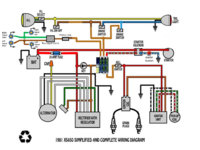Your diagram generally looks good. Its not clear from your diagram, but you want to have the 20 amp fuse, physically very close to the battery positive terminal, or to the starter relay terminal. In that way, all wiring down stream of the fuse is protected against a short circuit.
I see only 1 brake switch.................don't you plan to have a switch on both front and rear brakes?
You show only 1 right or 1 left turn bulb. That won't flash if you plan to use a stock type flasher unit. You would have to use 2 rights and 2 lefts to draw enough current for the flasher to do it's thing. If you only use 1 bulb per side, you could go with a "Tridon HD12", which will flash 1 bulb.




